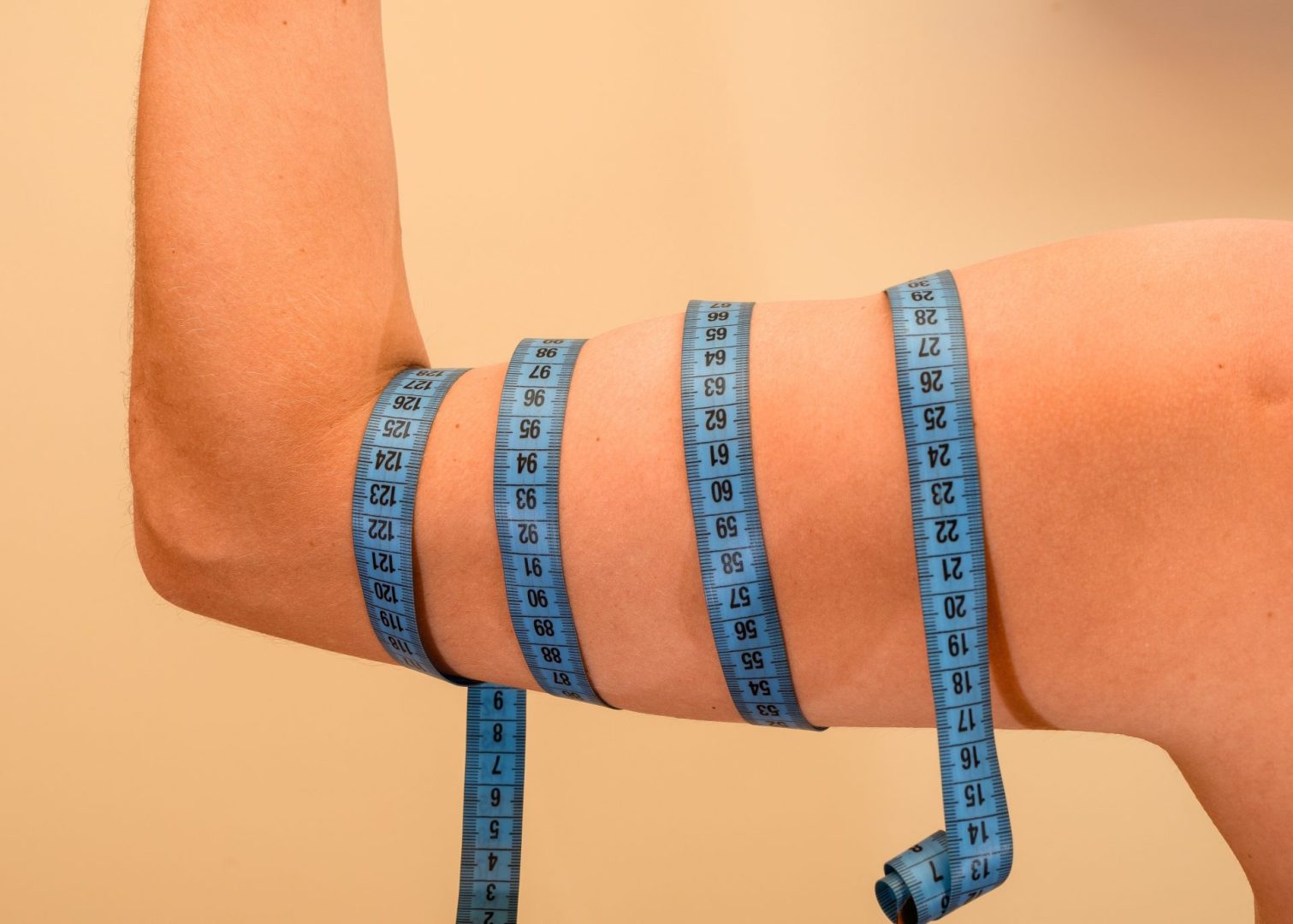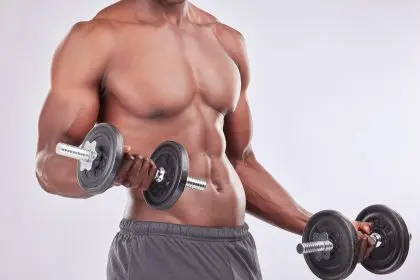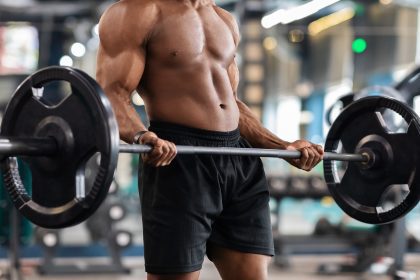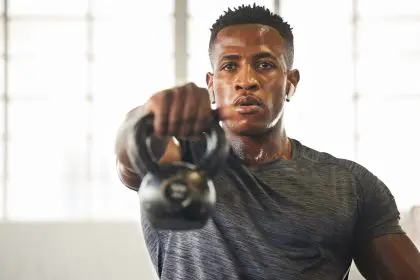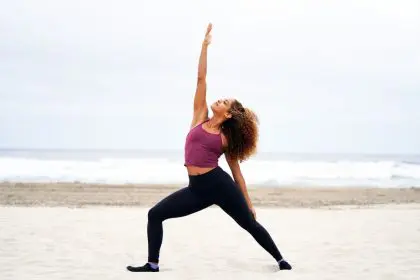Developing defined, capable arms doesn’t require marathon gym sessions or complex equipment. This streamlined seven-minute arm-sculpting method focuses on maximum efficiency while delivering impressive results. Perfect for fitting into even the busiest schedules, this routine targets every major muscle group in your arms through carefully selected movements that optimize your limited workout time.
Why arm strength matters beyond appearance
Strong, well-defined arms serve purposes far beyond their aesthetic appeal. They fundamentally improve your ability to handle daily activities with greater ease and confidence. From carrying groceries and lifting children to moving furniture or performing household tasks, functional arm strength creates tangible improvements in everyday life.
The workout emphasizes lifting challenging weights, which serves two important purposes. First, it builds muscular endurance that prevents fatigue during repetitive movements. Second, it stimulates muscle hypertrophy—the actual increase in muscle size that creates visible definition and shape.
Research consistently shows that targeted strength training delivers benefits well beyond the muscles themselves. Improved bone density, enhanced metabolic rate, better joint stability, and increased overall functional capacity all stem from dedicated upper body work. This makes your seven-minute investment particularly valuable from a holistic health perspective.
How this time-efficient method works
This carefully structured routine features five specific upper-body exercises, each performed for a precise 30-second interval followed by a 15-second recovery period. You’ll complete the entire sequence twice, creating an effective seven-minute session that maximizes results while minimizing time commitment.
The exercise selection ensures balanced development across all major arm muscles. By targeting the biceps, triceps, shoulders, and supporting muscle groups, the routine creates proportional strength and appearance improvements. This prevents the common problem of overdeveloping certain muscles while neglecting others.
For optimal results, fitness experts recommend incorporating this routine twice weekly into your exercise schedule, allowing at least one recovery day between sessions. This frequency provides enough stimulus for muscle development while allowing sufficient recovery time for growth and repair processes to occur.
Selecting the right resistance level
Choosing appropriate weights represents a crucial decision for maximizing your results. The ideal resistance should allow you to maintain proper form throughout the 30-second intervals while experiencing genuine challenge during the final repetitions.
The concept of “heavy” weights varies dramatically between individuals based on current fitness levels, exercise history, and natural strength profiles. Rather than focusing on specific numbers, concentrate on how the weights feel during your workout.
If you can easily complete all repetitions without feeling significant muscle engagement, the weight is likely too light to stimulate meaningful change. Conversely, if proper form deteriorates early in the set, the weight exceeds your current capacity and should be reduced to prevent injury.
As your strength improves over weeks of consistent training, gradually increasing your weights maintains the progressive overload necessary for continued development. This incremental approach ensures ongoing improvement while minimizing injury risk.
The complete 7-minute arm transformation routine
Each exercise in this sequence serves a specific purpose in developing balanced, functional arm strength. The timing parameters—30 seconds of work followed by 15 seconds of rest—create an effective intensity level that stimulates muscle growth without excessive fatigue.
The first circuit targets your primary arm muscles through compound movements that engage multiple muscle groups simultaneously. The second circuit repeats these exercises, challenging your muscles to maintain performance despite accumulating fatigue. This approach maximizes both strength development and endurance capacity.
The workout requires only dumbbells or kettlebells, making it accessible for home or gym settings. Having multiple weight options available allows for adjustments based on specific exercises and fatigue levels throughout the session.
Dumbbell floor press for triceps and chest
This foundation exercise builds upper body pushing strength while developing the triceps—the muscles along the back of your arms that create definition and capability.
Begin by lying face up on the floor with knees bent and feet firmly planted. Hold dumbbells in a goal post position next to your shoulders, with elbows resting on the floor. Engage your core by tucking your hips slightly and pressing your lower back toward the floor.
As you exhale, press the weights directly upward until your arms fully extend above your chest. Maintain controlled movement throughout, focusing on feeling your triceps engage during the pushing phase. Inhale as you slowly lower the weights back to the starting position, allowing your elbows to gently contact the floor before beginning the next repetition.
This movement enhances stability while targeting the chest and triceps effectively. The floor position naturally limits your range of motion, providing built-in safety for shoulder joints while still delivering excellent muscle recruitment.
Upright row for shoulder development
Standing with feet hip-width apart, hold dumbbells with arms extended downward in front of your waist. Maintain good posture with shoulders relaxed away from your ears and core engaged.
Exhale as you lift the weights upward along the front of your body, leading with your elbows until they reach slightly above shoulder height. Keep the weights close to your body throughout the movement. Inhale while lowering the weights back to the starting position with controlled movement.
This compound exercise effectively engages multiple upper body muscles, particularly targeting the deltoids (shoulders) and biceps. The movement creates balanced shoulder development while contributing to improved posture and functional pulling strength.
Hammer curls for bicep definition
Position yourself standing with feet slightly wider than hip-width for stability. Hold a dumbbell in each hand with palms facing inward toward your torso—this neutral grip position gives the exercise its “hammer” name.
Exhale while lifting one dumbbell toward your shoulder, keeping your upper arm stationary against your side throughout the movement. Only your forearm should move, pivoting at the elbow joint. Inhale as you lower back to the starting position with control, then repeat with the opposite arm.
This variation of the traditional curl allows for heavier weight selection, creating excellent stimulus for bicep development. The neutral grip position also engages the brachialis and brachioradialis muscles more effectively than standard curls, contributing to more complete arm development.
Alternating bent-over row for back strength
Stand with feet slightly wider than hip-width apart, holding dumbbells with arms extended. Hinge forward from your hips until your torso becomes nearly parallel with the floor, maintaining a flat back position with core engaged.
With a slight bend in your knees, exhale as you drive one elbow backward, pulling the dumbbell toward your hip while squeezing your shoulder blade toward your spine. Inhale while lowering the weight with control, then repeat with the opposite arm.
This pulling movement develops critical back muscles that support arm function and posture. The alternating pattern allows for heavier weight selection and creates rotational stability demands that engage your core muscles more effectively than bilateral movements.
Push press for explosive power
Begin standing with dumbbells positioned at shoulder height, palms facing inward. Set your feet at hip-width with knees slightly bent and core engaged.
Initiate the movement by dipping slightly at the knees, then explosively extend your legs while simultaneously pressing one dumbbell overhead. Keep the other dumbbell at shoulder height during this time. Lower the raised weight back to shoulder position with control, then repeat with the opposite arm.
This dynamic exercise combines strength and cardiovascular elements, making it particularly effective for the workout’s conclusion. The movement engages multiple muscle groups while developing coordination between lower and upper body power production.
Maximizing your results from minimal time investment
Performing this seven-minute routine consistently delivers impressive results over time, particularly when paired with these optimization strategies.
Focus intently on proper form rather than speed during each 30-second interval. Quality repetitions create better muscle engagement and development than rushed movements with poor technique. Aim for controlled, deliberate execution that creates genuine muscular challenge.
Schedule these sessions strategically within your weekly routine. Pairing them with lower-body or core-focused workouts on separate days creates a balanced approach to overall fitness while allowing proper recovery for each muscle group.
Track your progress by noting the weights used and approximate repetitions completed during each 30-second interval. This documentation provides concrete evidence of improvement over time and helps maintain motivation during plateaus.
Remember that nutrition plays a critical role in muscle development. Ensuring adequate protein intake supports the repair and growth processes that follow strength training. Most adults benefit from consuming 0.7-1 gram of protein per pound of body weight daily when engaged in regular strength training.
With just seven minutes twice weekly, this focused approach to arm development delivers noticeable improvements in both function and appearance. The combination of efficient exercise selection, appropriate intensity, and consistent implementation transforms this minimal time investment into meaningful results for long-term upper body strength.

